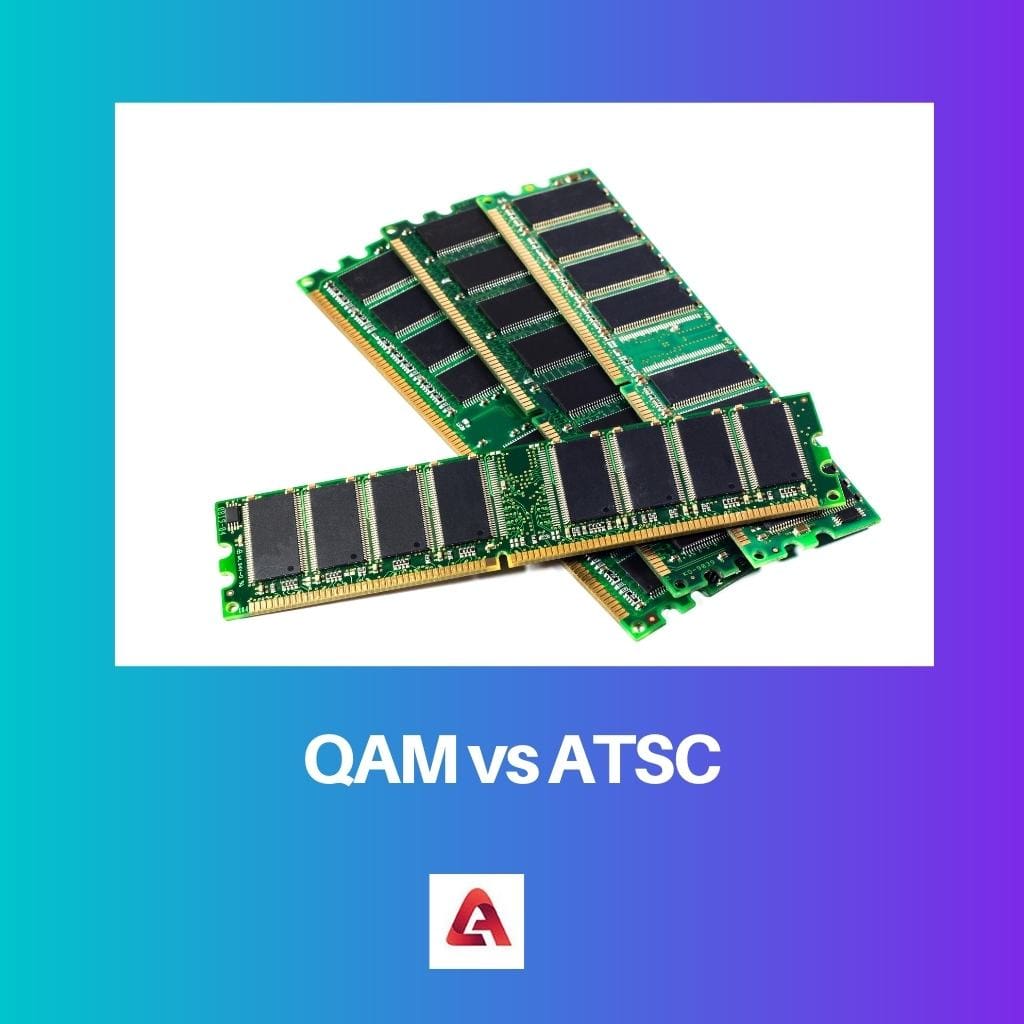QAM and ATSC are two digital standards that play an important role in receiving and decoding the digital signals that Television stations and cable companies send.
QAM stands for Quadrature Amplitude Modulation, a modulation method mostly used by telecommunication sections to decode messages or information.
ATSC, on the other hand, stands for Advanced Television System Committee. The ATSC is also a standard that is used in the United States. The purpose of ATSC is to provide HDTV picture quality. The audio provided by the ATSC signal is quite good.
Key Takeaways
- QAM and ATSC are both digital television standards used for broadcasting.
- QAM is used for cable television and can carry more channels, while ATSC is used for over-the-air broadcasts and has a higher picture and sound quality.
- QAM requires a cable subscription and a cable box, while ATSC can be accessed with an antenna and a digital TV tuner.
QAM vs. ATSC
The difference between Qam and ATSC is that Qam is primarily used to receive channel signals without any cable box, while ATSC, on the other hand, is received through the air. ATSC signals are also digital channels.

Comparison Table
| Parameters of Comparison | QAM | ATSC |
|---|---|---|
| Mostly Used | North America | North America |
| Standard for | The digital standard for cable | The digital standard for OTA |
| Requirements | It needs a much cleaner signal medium | This, too, needs a clean signal medium but can be much less when compared to QAM. |
| Bandwidth | Varies | 6MHz |
| Decoding | QAM decodes fewer TV sets when compared with ATSC | ATSC can decode many more TV sets than QAM. |
What is QAM?
QAM (Quadrature Amplitude Modulation) is a modulation used in modern telecommunications to transmit information.
QAM is one of the standards responsible for receiving and decoding the signals sent by Television stations and cable companies.
The QAM signals are used primarily to decode signals from a particular cable line. The QAM standard functions are quite different than ATSC, and you can make out several differences between these two standards.
QAM maintenance is quite high because you must keep it clean as it is designed mainly for cables only. The cleanliness is because QAM standards do not have error correction capabilities which are very significant.
The bandwidth used in QAM standards is 6MHz, and the signals received do not have much noise compared to ATSC signals. QAM’s most advantageous feature is that it can squeeze many channels in the bandwidth without any hindrance in the signal.
QAM is being used in most TV sets. So, we can say that this technology is available in all the latest TV sets. Older TV sets use a set-top box in the package, which will help to decode the QAM signals.
However, more and more people are shifting to the latest TV sets, and soon, QAM will be in all HDTV TV sets.
What is ATSC?
On the other hand, ATSC stands for Advanced Television System Committee and is another type of digital standard that can receive and decode the signals sent by TV stations and cable companies.
ATSC’s one standout feature differentiating the standard from others is that ATSC receives over-the-air (OTA) signals. Therefore the operations and implications are different when ATSC is compared with QAM.
QAM and ATSC might differ, but surprisingly, QAM is based on ATSC. QAM still uses the format that ATSC established. Well, ATSC does not need cleaner cables for receiving and decoding signals, making it an advantageous point.
TV sets connected to the antenna are the best example of ATSC signals. Most people still have this kind of connection at their house where we can see that the antenna is set in the open terrace and the TV set is connected to it.
ATSC digital signal was discovered way before QAM and ATSC were also installed in all TV sets meant to receive signals digitally. ATSC signals create some noise which is a disadvantageous feature.
ATSC can decode more TV sets than QAM, which is one of the biggest advantages. However, both QAM and ATSC have something in common: both carry IPTV streams.
Main Differences Between QAM and ATSC
- Both are digital standards for receiving and decoding digital signals.
- QAM is a digital standard for cables; on the other hand, ATSC is a digital signal for OTA (over the air)
- The ATSC digital signal does not need a much cleaner medium than QAM’s digital signal.
- QAM’s bandwidth is almost double that of an ATSC digital signal, making the difference between the two.
- QAM is lacking when decoding several TV sets, whereas ATSC can have the capability to decode as much as TV sets as possible.
- https://ieeexplore.ieee.org/abstract/document/7937997/
- https://ieeexplore.ieee.org/abstract/document/7383281/